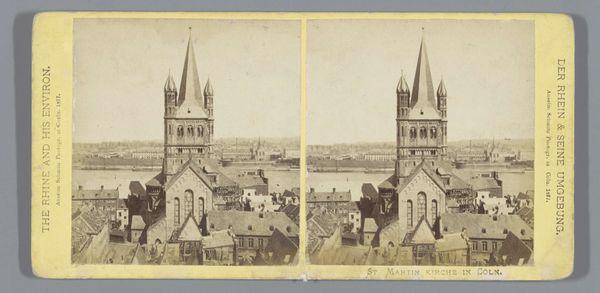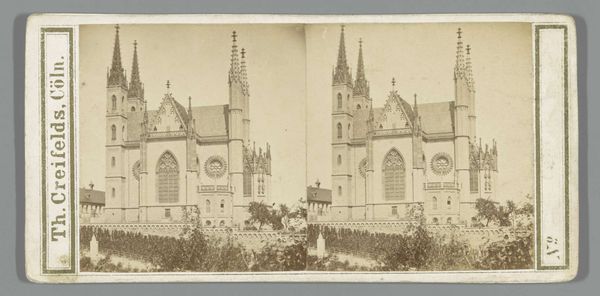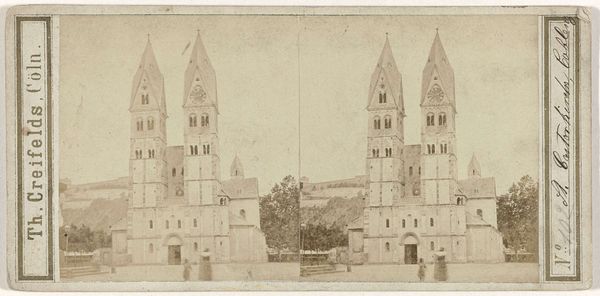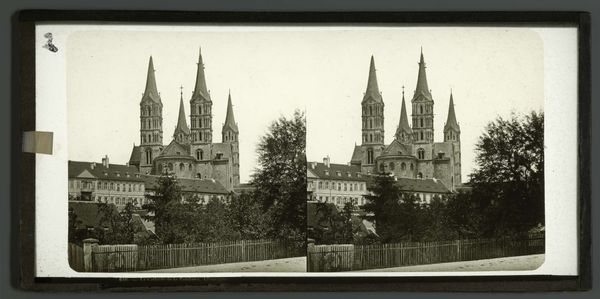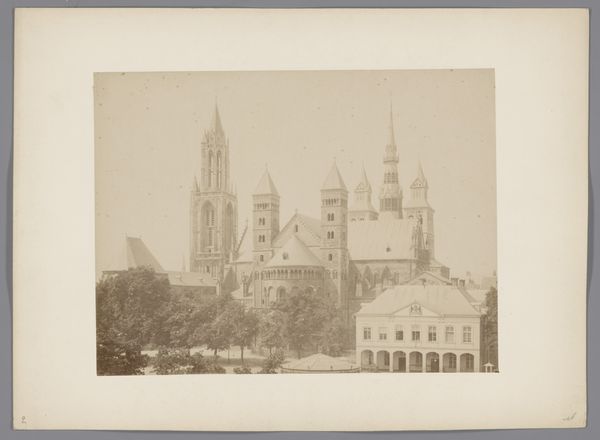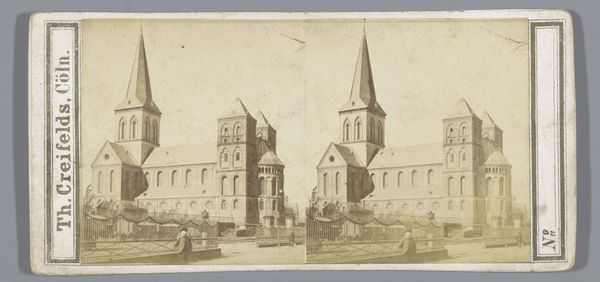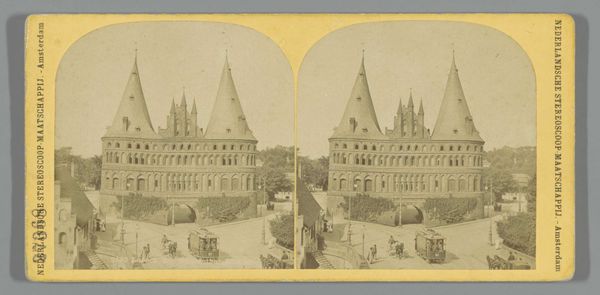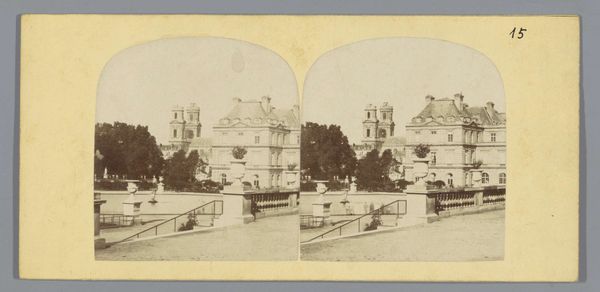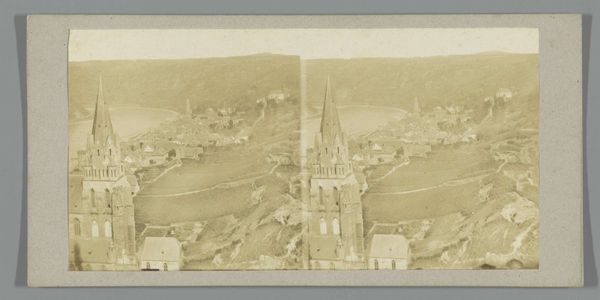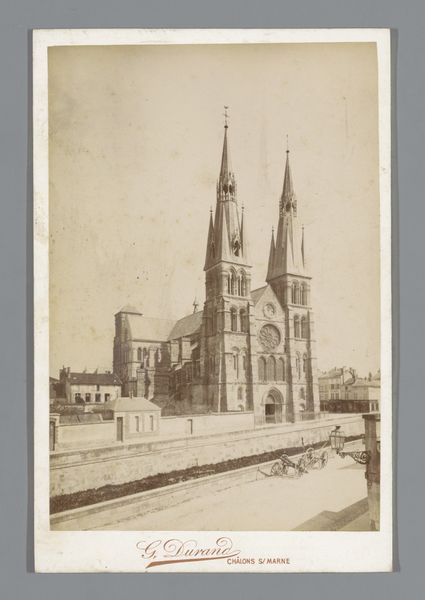
print, photography, gelatin-silver-print
# print
#
landscape
#
photography
#
romanesque
#
gelatin-silver-print
Dimensions: height 85 mm, width 170 mm
Copyright: Rijks Museum: Open Domain
Curator: Let’s turn our attention to a gelatin-silver print, Exterieur van de Apollinariskerk te Remagen, created by Theodor Creifelds, likely sometime between 1860 and 1880. It’s quite striking. Editor: My first thought is, that's one serious looking building. It’s visually very dense; everything feels rather tightly packed in, and there is little variation in the colouration, but I see two distinct viewpoints of the same place. Curator: It's a stereo card; a popular form of 19th-century entertainment designed to be viewed through a stereoscope to create an illusion of depth. Churches, particularly grand ones like this neo-Romanesque Apollinaris Church, served not just as houses of worship but powerful symbols of authority and continuity. This specific one held relics of Saint Apollinaris, imbuing it with unique religious and historical significance, all visible to believers near and far. Editor: And speaking of distant viewing, producing this print required multiple layers of craft. We've got the labour involved in the silver gelatin process itself, then the labour of architecture and physical upkeep of the space it's designed to represent, but also consider how the printmaking enterprise relates to the Rhine and environs as a site for commerce, leisure and tourism as its titled, quite directly in German. It speaks to a very robust regional picture economy. Curator: Indeed, the image freezes the dynamism you suggest, doesn't it? While ostensibly documenting the church, Creifelds’ print offers a subtle meditation on enduring power. The towering spires speak to architectural ambition but they are echoed on each side. Editor: Right, this wasn’t just a picture—it was a manufactured object meant for consumption, both religious and touristic. I keep coming back to this. How does one access the labour within these artifacts when they are only seen through these "historical" eyes. The image’s dissemination reinforced certain notions about sacred spaces within very structured networks of exchange. Curator: Yes, its circulation helped consolidate cultural values. The stereoscopic view offered an accessible “experience” for a populace eager to connect with sites weighted by history. Each steeple, arch, and meticulously placed stone became imbued with significance for those viewing from a distance, almost turning viewers into pilgrims themselves. Editor: A sort of paper pilgrimage! Thinking about production really grounds these grand symbolic statements; reminding us they were built by people for people with materials and exchange. It reframes the symbolic weight you are highlighting, allowing me to contemplate how that was crafted as well. Curator: It is remarkable to remember the degree of effort and thought embedded in what seems like a simple image. Editor: Absolutely, revealing the intricate relationships between the physical, social, and the symbolic world we observe in this view.
Comments
No comments
Be the first to comment and join the conversation on the ultimate creative platform.

